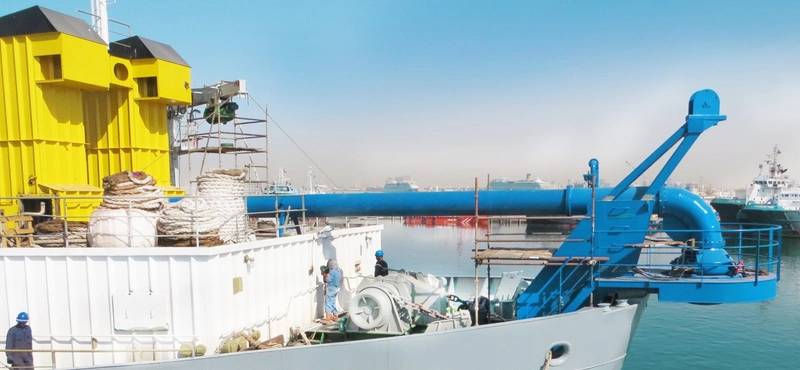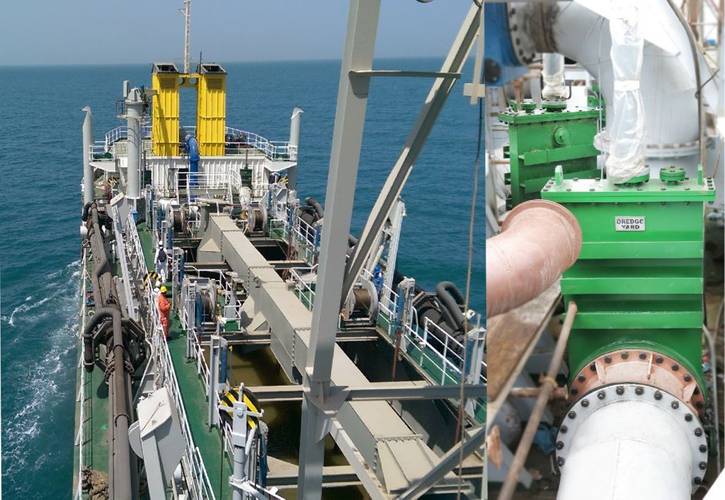Dredge Yard, a company specialized in dredging and mining components, equipment and technologies, shares insight into the upgrading of equipment, modification of dredging system and conversion of existing vessels into dredgers.
Upgrading existing dredger systems is quite practical as it offers reusability and functionality of the old dredger with low investment. Converting an existing vessel into dredger can help in increasing the capacity and capability of the dredging companies in much lesser time with a huge saving in investment.
Dredger modifications are also needed when the dredger supplied may not meet the requirements and slight changes in the parts or systems to make it appropriate for the project requirements.
All types of dredgers can be subject for modifications, varying from replacing a single pump with more efficiency, to the whole suction/discharge system of the dredger, or converting existing barges and vessels into dredgers.
Upgrading dredge pumps
A dredge pump or sand-slurry pump is considered the heart of the dredger and plays the most vital role in the dredger’s efficiency.
Dredge Yard’s senior design engineer , Manish Jangir, said, “Latest tools in the market like CFD and optimum design calculating software have widen the paths of having an efficient pump design for the same old pump without changing any fitting parameters or the connections like the flange.”
After achieving the final design of the pump, the manufacturing is done by using the latest production techniques, molding software for casting and strict metallurgical testing.
Upgrading suction and delivery lines
Dredger suction and delivery lines are the means of transport of slurry and the line design, and components vary between dredgers. The efficiency of the dredger depends on the pump, and the pumps efficiency certainly depends on the pipe line. The maintenance cost depends on the quality and capability of the components. The major components involved in the pipe lines are: pipe pieces, gate valves, suction mouth, swivel bend, bow coupling, turning glands, ball joint couplings, etc.
Kabi Eisa, production manager at Dredge Yard, describes the double wall dredge pipe as the newest trending product in the dredging market. He also adds that the double wall pipes are highly wear resistant due to their special design where three layers of material have been used. It consists of wear liner, concrete and steel pipe where wear liner being the layer that will be in contact with the sand or slurry.
Dredge gate valves are slightly sophisticated components and for proper functioning and maintenance, it is very important to select the right type with right material and pressure handling capability for long life.
Upgrading split suction trailing hopper dredger
“For example, the dredger in the image didn’t have a discharge line and could only offload the material through its bottom doors,” said Michel Debo, Dredge Yard’s operational manager. “Dredge Yard developed the complete suction and discharge line on the ship which includes several pipes, bends, dredge valves and bow coupling. The nominal diameter of pipe is 750 mm.”
Converting hopper barge into trailing suction hopper dredger
Another example shows a barge in Brazil, capacity 800 m3, which is in process of conversion into trailing suction hopper dredger. A complete trailing suction system has been installed on the barge. The system consists of drag head, turning gland, gantries, sliding piece, pipes, bends, valves, pump and bow coupling.
Discharge line on TSHD
Many hopper dredgers are upgraded by adding complete discharge line on the ship as pipes, bends, valve and bow coupling structure.
Modifying or converting old vessels will always be considered the most convenient alternative due to the cost cuts, less time involved in the makeover of an old ship than building a new one and the possibility of customizing the vessel according to the customers’ needs.














